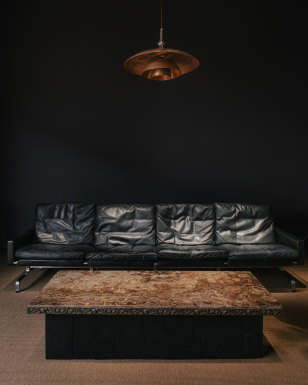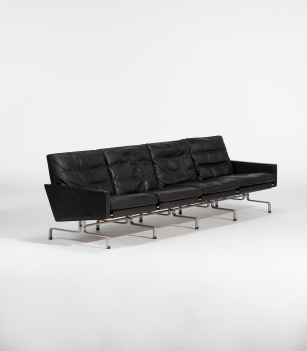Kjærholm Poul
Biography
Born in Oster Vra, Denmark, Kjaerholm apprenticed as a joiner to master-cabinet maker Gronbech in 1948. He studied at the School of Arts and Crafts in Copenhagen where he would later teach, from 1952-56. His further academic career led him from lecturer at the Royal Danish Academy of Fine Arts in 1959 to head of the Institute of Design in 1973 and finally to professorship in 1976 (succeeding Ole Wanscher).
Kajaerholm's designs are characterised by their understated elegance, clean lines and remarkable attention to detail – modest in means, but rich in expression. He liked to think of himself as a furniture architect rather than just a designer, in typical Bauhausian mode, stating that furniture should intervene into an exisitng 'space' and transform it into a place, where human relations can be clarified and made visible.
While Danish designers traditionally used wood as their primary material Kjaerholm chose steel, but always combined it with other materials such as wood, leather, cane or marble. He explained that "Steel's constructive potential is not the only thing that interests me: the refraction of light on its surface is an important part of my artistic work. I consider steel a materials with the same artistic merit as wood and leather."
Kjaerholm's work is represented in numerous museums around the world, most notably in the permanent collection of the Museum of Modern Art in New York and at the V&A Museum in London. He has won several awards including two grand prix at the Milan Triennial in 1957 and 1960. The Lunning Award in 1958 and the ID Award in 1973.

